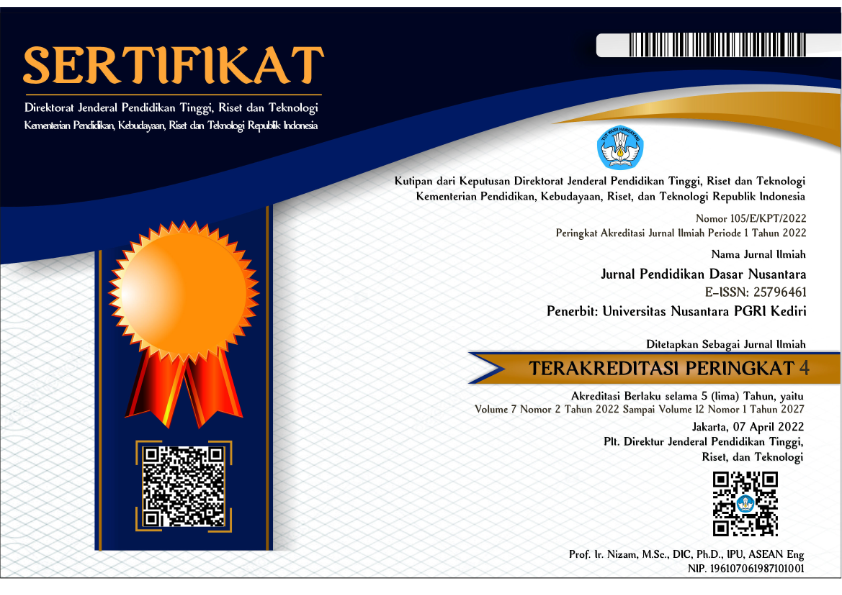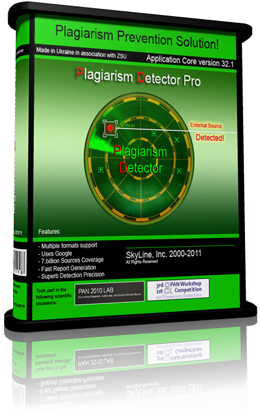PENERAPAN MODEL PROBLEM BASED LEARNING (PBL) UNTUK MENINGKATKAN PEMBELAJARAN IPA SISWA KELAS V SDN PRINGAPUS 2 KECAMATAN DONGKO KABUPATEN TRENGGALEK
DOI:
https://doi.org/10.29407/jpdn.v1i1.147Abstract
Abstract: Found the problem that science teaching in class V SDN Pringapus 2 Trenggalek still centered on the teacher, this adversely affects the activity and student learning outcomes in science subjects. The research was conducted with the aim to describe the application of the model PBL, student activity when applied to the model PBL, and student learning outcomes after application of PBL models. This study design was used classroom action research conducted by two cycles, with the subject of fifth grade students of SDN Pringapus 2 Trenggalek. The results showed that the application of the model PBL can improve pembelajran IPA, basic competence "describes the simple plane that can make the job easier and faster" SDN Pringapus 2 Subdistrict Dongko Trenggalek. It is recommended that teachers apply the
model of PBL in science learning.
Keywords: Model Problem Based Learning (PBL), Learning science.
Abstrak : Ditemukan masalah bahwa pembelajaran IPA di kelas V SDNPringapus 2 Kabupaten Trenggalek masih berpusat pada guru, hal ini berdampak pada rendahnya aktivitas dan hasil belajar siswa pada mata pelajaran IPA. Penelitian ini dilaksanakan dengan tujuan untuk mendeskripsikan penerapan model PBL, aktivitas siswa ketika diterapkan model PBL, dan hasil belajar siswa setelah diterapkan model PBL. Penelitian ini menggunakan rancangan penelitian tindakan kelas yang dilakukan dua siklus, dengan latar kelas V SDN Pringapus 2 Kabupaten Trenggalek.Hasil penelitian menunjukkan bahwa penerapan model PBL dapat meningkatkan pembelajran IPA, kompetensi dasar “menjelaskan pesawat sederhana yang dapat membuat pekerjaan lebih mudah dan cepat” SDN Pringapus 2 Kecamatan Dongko Kabupaten Trenggalek.Untuk itu disarankan agar guru menerapkan model PBL dalam pembelajaran IPA.
Kata kunci: Model Problem Based Learning (PBL), Pembelajaran IPA
Downloads
Downloads
Published
Issue
Section
License
Authors who publish with this journal agree to the following terms:
- Copyright on any article is retained by the author(s).
- The author grants the journal, the right of first publication with the work simultaneously licensed under a Creative Commons Attribution License that allows others to share the work with an acknowledgment of the work’s authorship and initial publication in this journal.
- Authors are able to enter into separate, additional contractual arrangements for the non-exclusive distribution of the journal’s published version of the work (e.g., post it to an institutional repository or publish it in a book), with an acknowledgment of its initial publication in this journal.
- Authors are permitted and encouraged to post their work online (e.g., in institutional repositories or on their website) prior to and during the submission process, as it can lead to productive exchanges, as well as earlier and greater citation of published work.
- The article and any associated published material is distributed under the Creative Commons Attribution-ShareAlike 4.0 International License

































